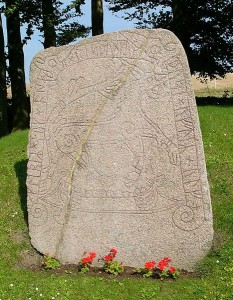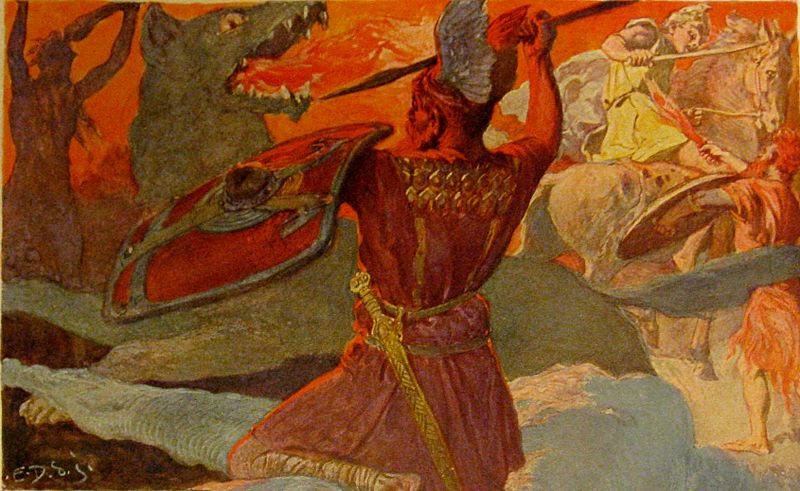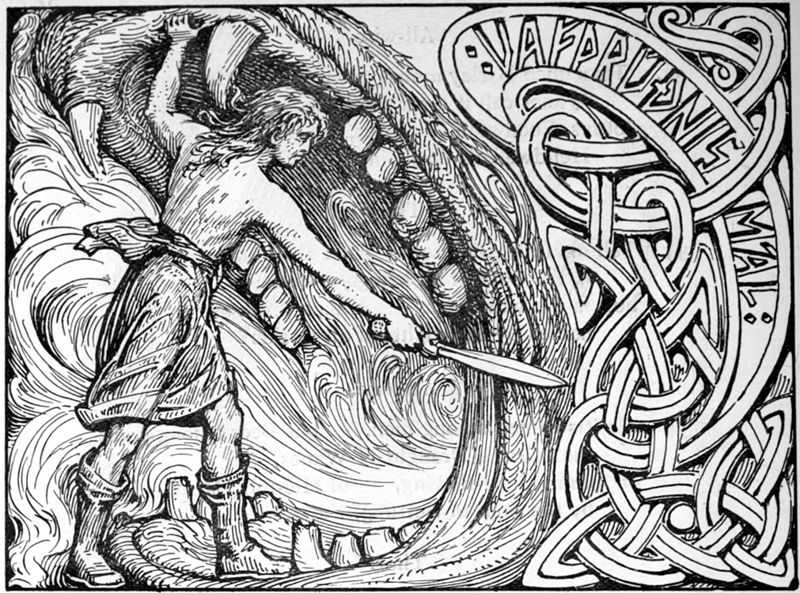The end is nigh (again). Posted by hulda on Feb 13, 2014 in Icelandic culture, Icelandic history, Uncategorized
Bad news first, the end of the world has been announced for the 22nd of February. Then for the good ones, this time it will be Ragnarök so no need to repent your sins, just strap yourself in and enjoy the ride! To be expected: earthquakes, volcanic activity, possible sightings of a massive sea serpent, eternal darkness, lots of fire and Loki running around with his family and friends.
Like all such doomsday scares it may be good to avoid unnecessary panic and carry on though, because coincidentally this Ragnarök will happen at the same time as the 2014 Jorvik Viking Festival, whose arrangers, by the way, are also behind the prediction. Besides if Ragnarök did happen it would need more than just one day according to the Eddic texts. It will begin with summers where the sun does not show itself at all, and the crow of three roosters, one in the lands of the jötunns, another in Ásgarður and third in the halls of Hel in the land of the dead. Following this warning the first wolf-beast of the end times, Garmr, will break its chains and begin an age of chaos:
45.
Bræðr munu berjask
ok at bönum verðask,
munu systrungar
sifjum spilla;
hart er í heimi,
hórdómr mikill,
skeggöld, skalmöld,
skildir ro klofnir,
vindöld, vargöld,
áðr veröld steypisk;
mun engi maðr
öðrum þyrma.
Brothers will fight each other/and be the bane of each other,/sisters’ children will/break kinship;/the world will be hard,/much whoredom,/age of axes, age of swords,/shields will be broken,/age of winds, age of wolves,/before the world falls down:/no man will/spare another.
By this time the god Heimdallr will notice something is badly amiss and will sound a warning with Gjallarhorn. The tree of life shakes and Loki breaks free from his shackles, rising an army against the Nordic gods with the help of Surtr and Hel’s people and his own monstrous children Jörmungandr/Miðgarðsormr and the wolf Fenris. Naglfar, a ship made entirely of the finger- and toe nails of the dead, will finally be completed and Loki will captain it. It’s said that Naglfar is the largest ship there ever was, and to avoid adding up to its completion the Medieval Nordic people kept their nails trimmed short and tidy.
Óðinn battles Fenris-wolf, in the background Freyr (mounted) goes against Surtr (on foot).
The battle will be fierce. Among the first fallen will be Óðinn whose death at the jaws of Fenris will be avenged by his son Víðarr. Víðarr’s said to be almost as strong as Þór and owns “iron shoes” or “thick-soled shoes”, that he’ll stomp on Fenris’ lower jaw and tear his mouth apart. These shoes are made of the toe and heel parts of human shoes so anyone trimming their shoes was advised to throw the pieces away to assist Víðarr.
56.
Þá kemr inn mæri
mögr Hlóðynjar,
gengr Óðins sonr
við orm vega,
drepr af móði
Miðgarðs véurr…
…gengr fet níu
Fjörgynjar burr
neppr frá naðri…
Then arrives the mighty/child of Hlóðyn,/Óðinn’s son goes/to battle the snake,/he kills in rage/the consumer(?) of Miðgarður… …takes nine steps/Fjörgyn’s son/barely, from the snake…
Here we have some kennings, poetic language that you can understand only if you know the mythology well enough. Hlóðyn and Fjörgyn are both names of the same woman, also called Jörð, the earth. Her and Óðinn’s son is Þór and this poem describes his battle with the Miðgarðsormur. He manages to kill it but in turn gets poisoned by the snake and dies but a few steps away from it.
The sea rises, the stars fall and the sun turns black. Týr battles the wolf Garmr and they both die, Freyr falls while fighting Surtr because he once gave his sword away to gain the love of his life, therefore being weaponless in the final war. Surtr will engulf the whole world in flames, and that will be the end of everything – or will it?
Víðarr avenges his father.
Technically speaking Völuspá ends with the rise of a new paradise called Gimli, ruled by the virtuous gods and an undefined one true power from above (the Medieval texts were often written down by Christians so there may be some Christian influence included) so it can be argued that the Nordic end of the world is actually not a real end of the world at all. Rather it shows a cyclic view of the universe where the old has to be destroyed so that something new can be created. Ragnarök sets the time back to the beginning of creation, to a new paradise and the two humans that survive the ending, Leifþrasi and Líf, whose job is now to fill the world with humans. And so another cycle beings…
I know this video is barely related to the main topic but please bear with me: a few days ago I accidentally came across a group of history reenactors that were singing Medieval songs to the public. Of course I tried to take a video but the picture quality turned out real bad due to lack of light. I thought the song itself was definitely worth listening to so I made a simple video for it. I added the lyrics and a quick English translation so that it’s easier to follow, although any Medieval Iceland fans will probably recognize the poem immediately. 😀 It’s one of the most famous poems by Egill Skalla-Grímsson and the story goes that he was only nine years old when he composed it…
Sólstafir started out in 1995 and is still active. Their music style is notoriously hard to pin down, tries have ranged from heavy metal to viking metal to traditional-influenced, but that’s exactly why this band is so outstanding.They’re well known in Europe and as such perhaps me recommending them is no news, but I’m a huge fan so I’m dedicating this Ragnarök post ending to them anyway. 😀
Kukl (link), the video includes lyrics.
Fjara (link), lyrics can be found here. The video is amazing!
Í víking (link).
The pictures used to illustrate this entry are from the following sources: 1, 2, 3, 4.

Build vocabulary, practice pronunciation, and more with Transparent Language Online. Available anytime, anywhere, on any device.
About the Author: hulda
Hi, I'm Hulda, originally Finnish but now living in the suburbs of Reykjavík. I'm here to help you in any way I can if you're considering learning Icelandic. Nice to meet you!








